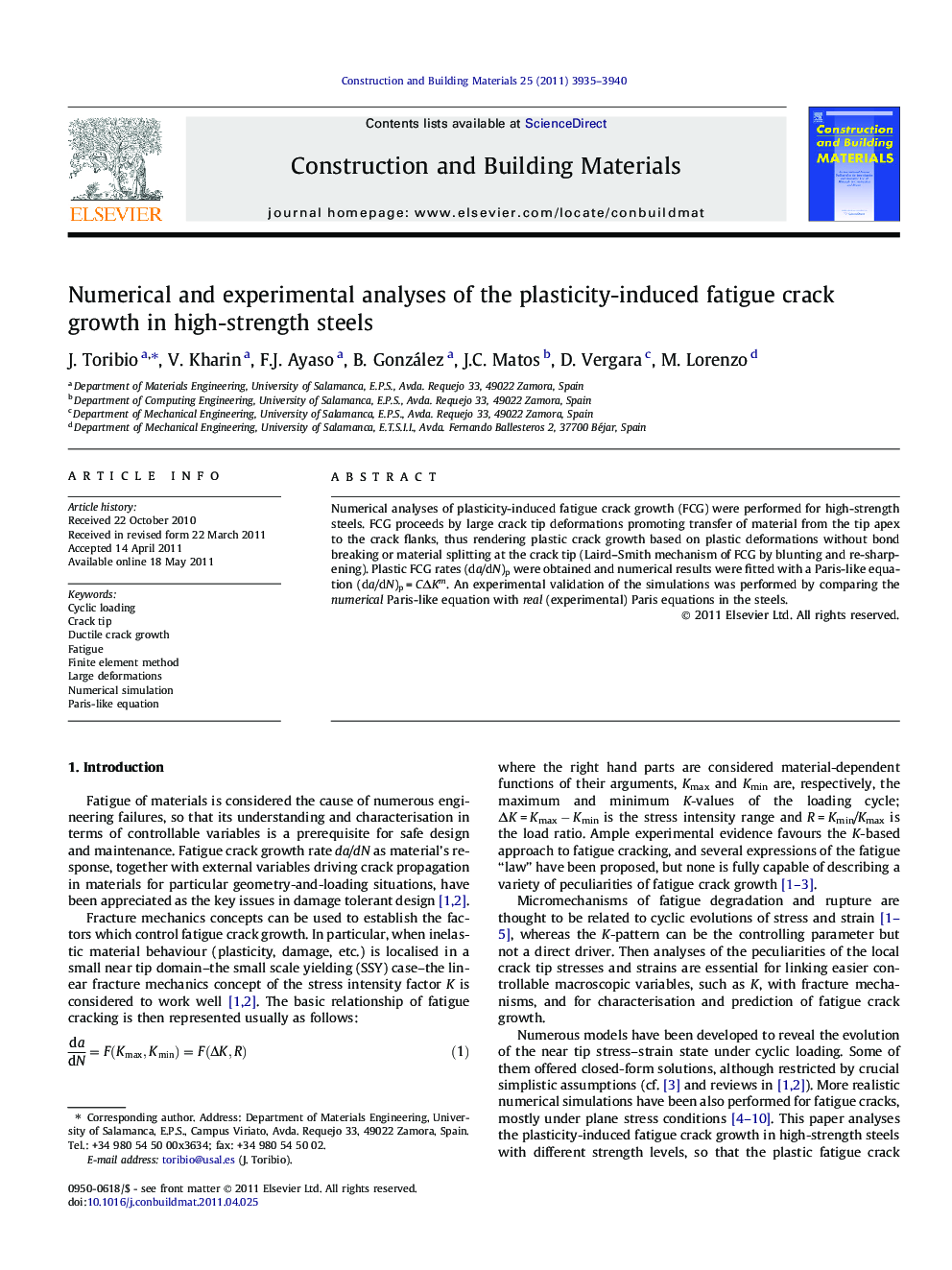| Article ID | Journal | Published Year | Pages | File Type |
|---|---|---|---|---|
| 259488 | Construction and Building Materials | 2011 | 6 Pages |
Numerical analyses of plasticity-induced fatigue crack growth (FCG) were performed for high-strength steels. FCG proceeds by large crack tip deformations promoting transfer of material from the tip apex to the crack flanks, thus rendering plastic crack growth based on plastic deformations without bond breaking or material splitting at the crack tip (Laird–Smith mechanism of FCG by blunting and re-sharpening). Plastic FCG rates (da/dN)p were obtained and numerical results were fitted with a Paris-like equation (da/dN)p = CΔKm. An experimental validation of the simulations was performed by comparing the numerical Paris-like equation with real (experimental) Paris equations in the steels.
► Fatigue crack growth (FCG) is based on plastic deformations without bond breaking or material splitting at the crack tip. ► FCG proceeds by large crack tip deformations promoting material transfer from the tip apex to the crack flanks. ► Plastic FCG rate was calculated from the numerical simulations, and a Paris-like equation was fitted. ► An experimental validation was performed by comparing a Paris-like equation of plastic FCG with real Paris equations. ► Results are a manifestation of the Laird’s conceptual scheme of the mechanism of crack growth in ductile materials.
